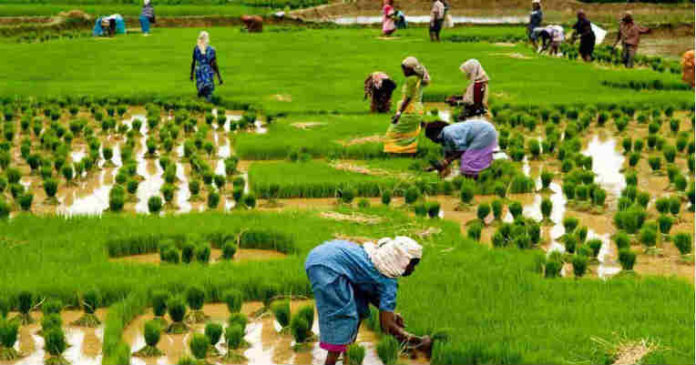Stable policies combined with investments could improve the future of agriculture in the African region, according to a report published by the Organisation for Economic Co-operation and Development (OECD) and the Food and Agriculture Organization of the United Nations (FAO).
The OECD FAO Agricultural Outlook 2016-2025, which had a special focus on ‘Agriculture in Sub-Saharan Africa: Prospects and challenges for the next decade,’ was launched Tuesday, December 6, 2016 at the 2016 African Economic Conference in Abuja. It provides assessment of medium-term prospects of national, regional and global agricultural commodity markets.
The OECD FAO Agricultural Outlook 2016-2025 estimates that the total agriculture production is expanding about 2.6 per cent a year.
The report identified Sub-Saharan Africa as one of the most dynamic regions of the world, where agriculture continues to play an important role in development, highlighting how cash crops offer alternative sources of income.
It called for a holistic approach to recognize the inter-linkages between rural poverty, food security, nutrition, sustainable agriculture, healthy eco-systems and climate change.
Speaking at the launch event, an Economist at the Food and Agriculture Organization (FAO), Holger Matthey, stressed that though the document was called a forecast, it is a consensus analysis on the future evolution of international commodity market.
“The publication has been around for 12 years now and as you may have seen, it provides an outlook for ten years, into the future; it is model-based, but it is a consensus, where a lot of reviews, experts appreciate the baseline projections. The coverage is global. Africa has ten countries singled out in this report,” he noted.
The good news, he said, is that an increasing share would come from an improved productivity.
“We think that increased productivity would be the major driver. The growth in food demand is estimated at just over 3 per cent a year driven by population growth and leaving the per capita gains modest,” he stressed.
The Outlook provides supply, demand, trade and price estimates of major agricultural commodities for 41 countries and 12 geographical regions.
The Outlook highlighted how efficiency gains in production enable production growth at lower real prices and how increases in food demand is limited by slowing population growth and a gradual saturation of consumption in emerging economies.
The report noted how productivity growth is driven mainly by yield improvements: “Over the ten-year Outlook period, the demand growth for food is expected to slow progressively. Global population growth, the main driver of demand increases, is declining, while income growth in emerging economies is projected to be weaker,” the report reads. “At the same time, consumers, especially in populous emerging economies, show a declining propensity to spend income gains on consuming more basic foodstuffs. Demand for meat, fish and dairy products will grow relatively strongly, inducing additional demand for feed, in particular from coarse grains and protein meals. Demand for agricultural commodities for biofuel production is projected to stagnate due to the lower energy prices and more conservative biofuel policies in several countries.
“Undernourishment in Sub-Saharan Africa remains high, and in ten years the region will account for more than one third of the global total of undernourished, compared with just over a quarter today. Many countries will be confronted with a complex burden of undernourishment (too few calories), obesity, and micronutrient deficiency (with unbalanced diets a common problem).”
To read the full report:bit.ly/2gzHlIq

